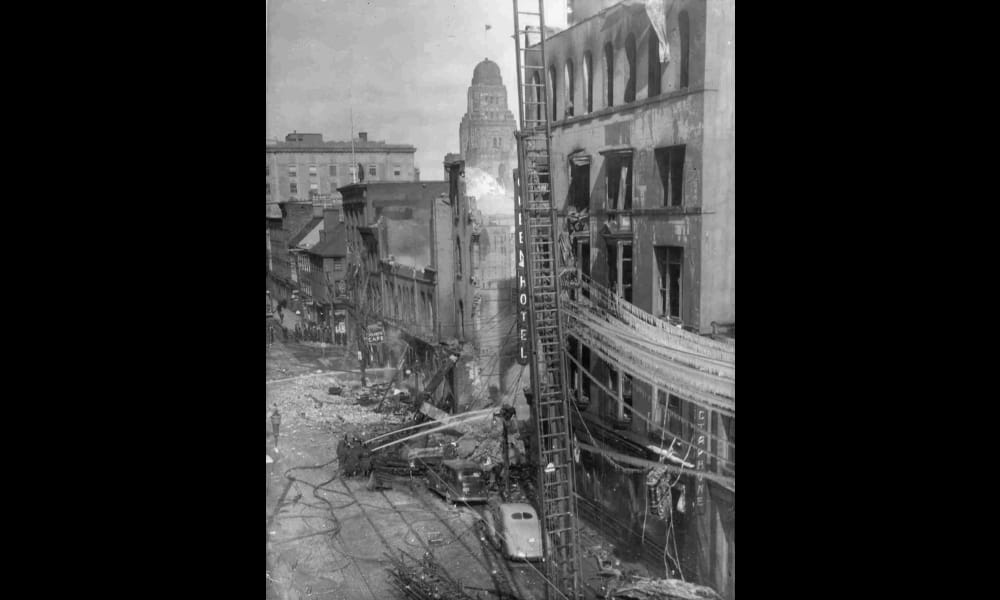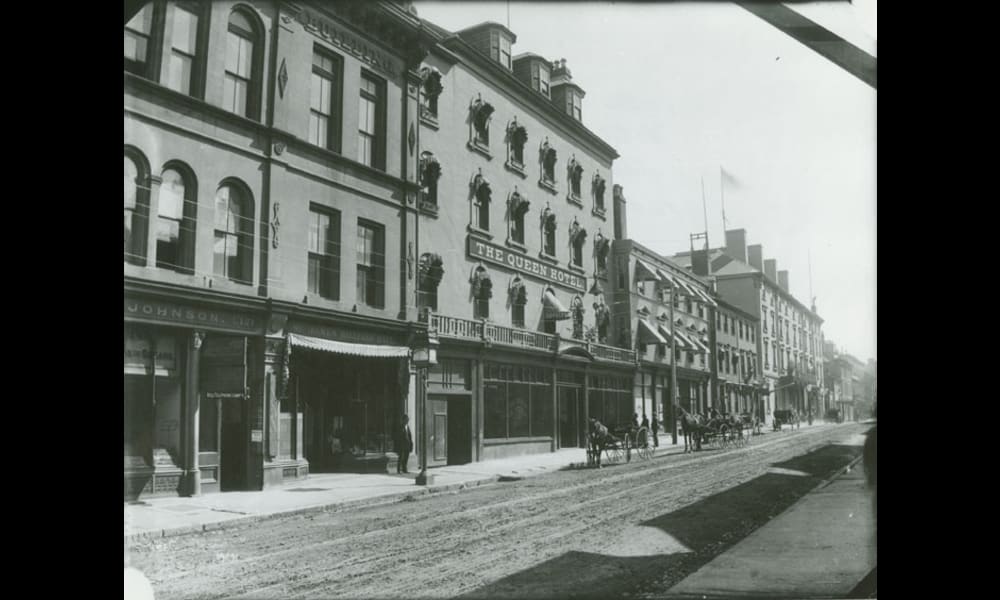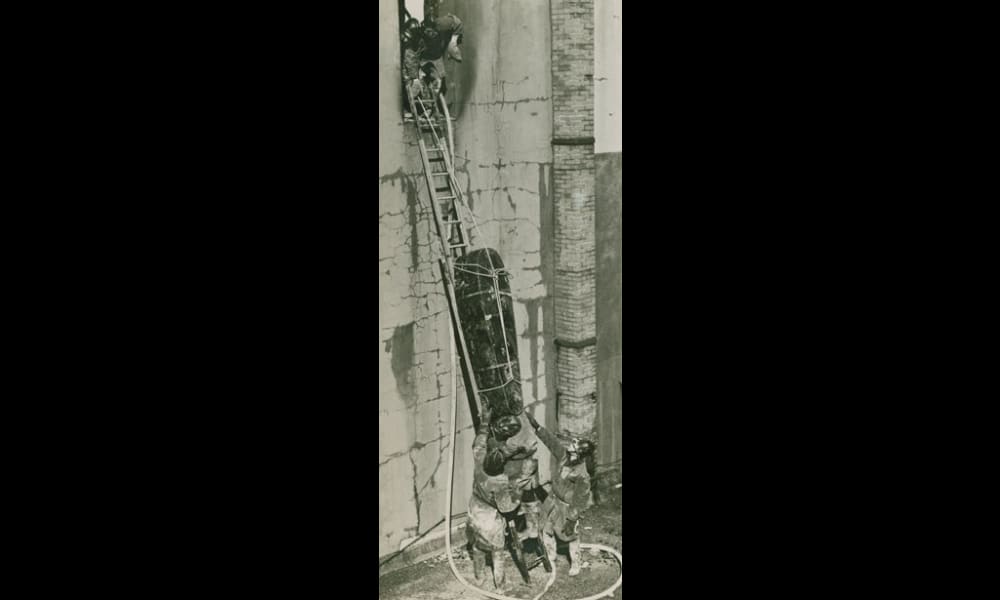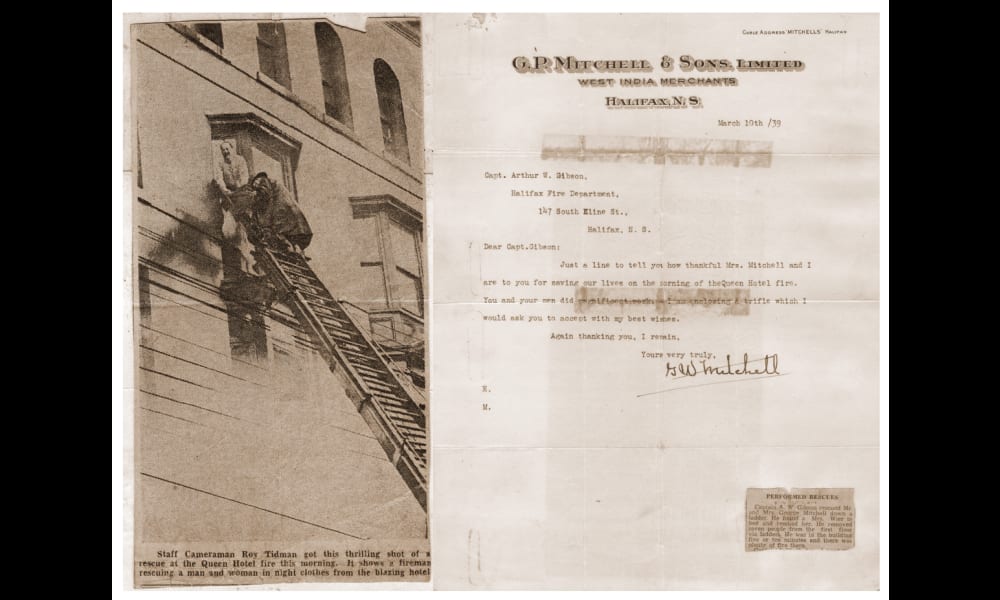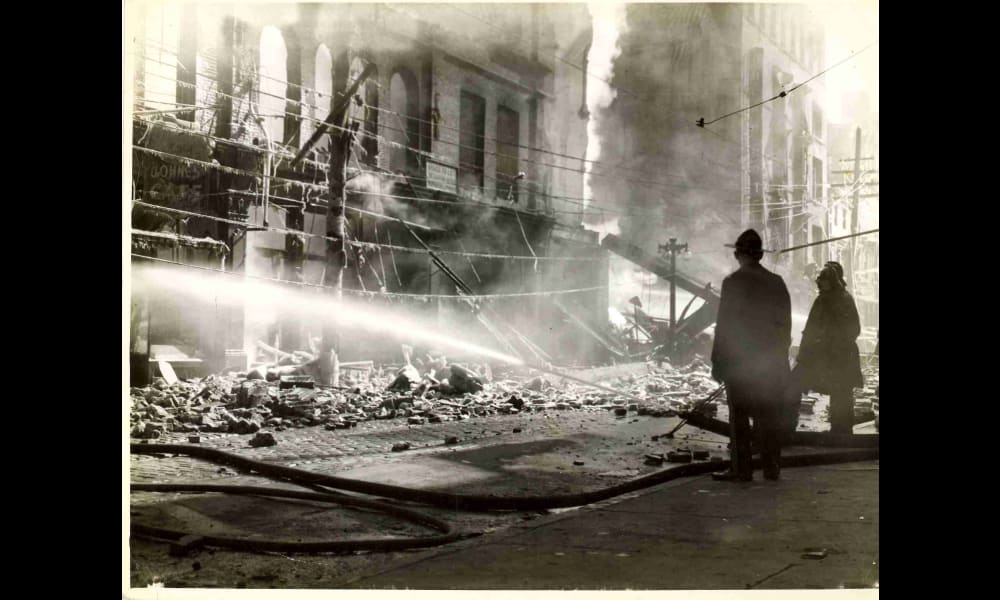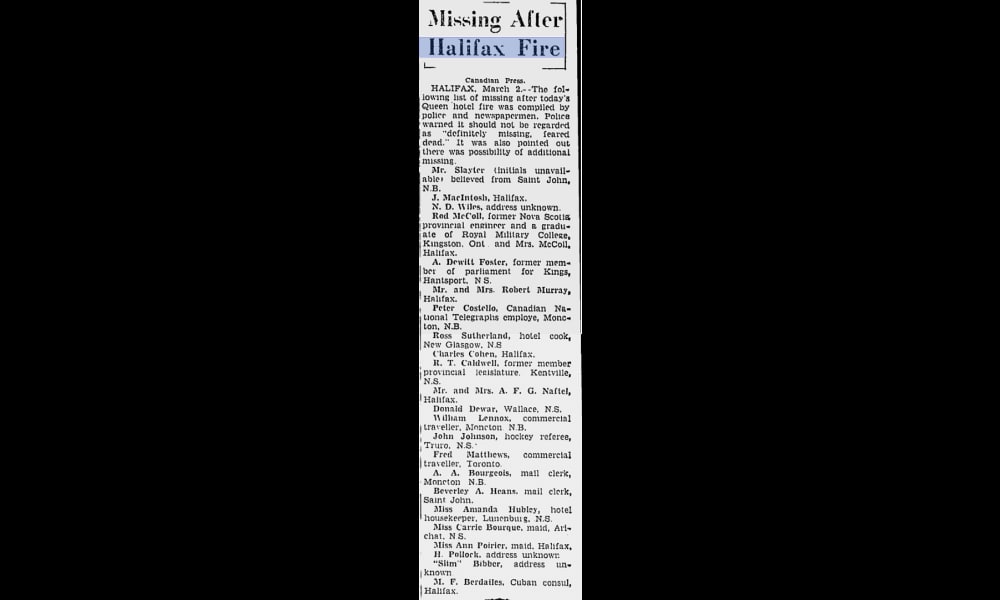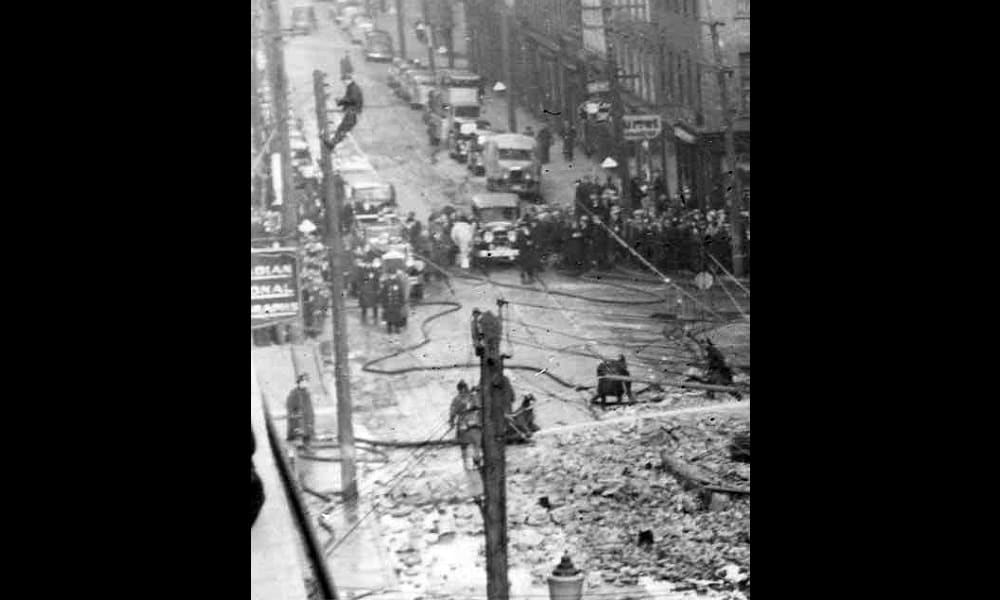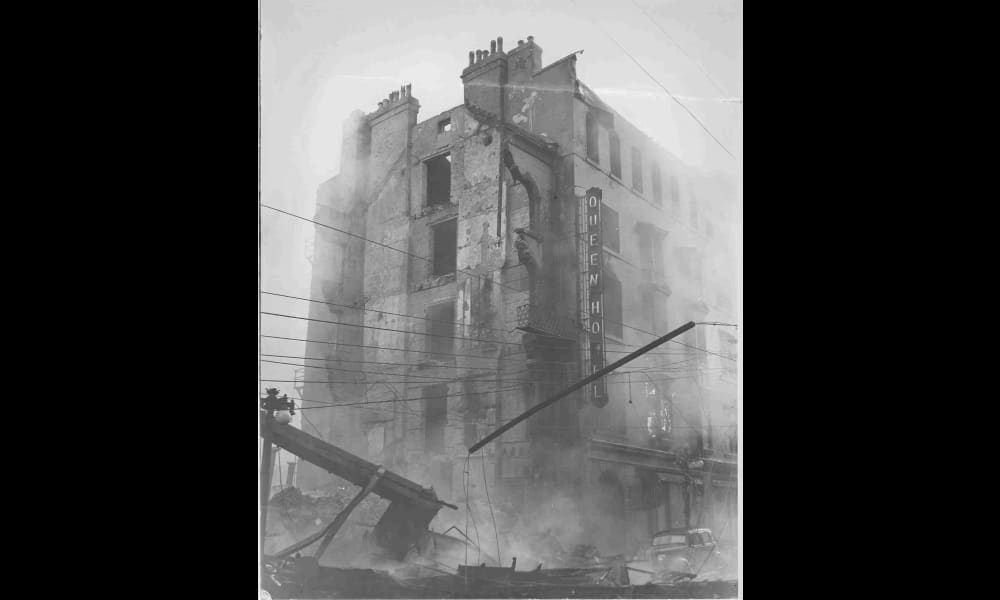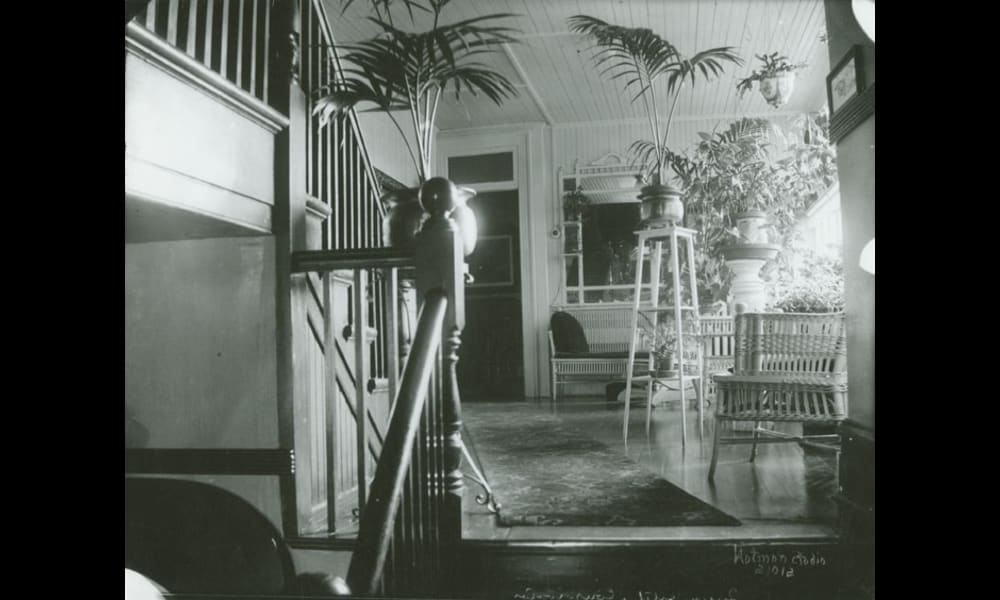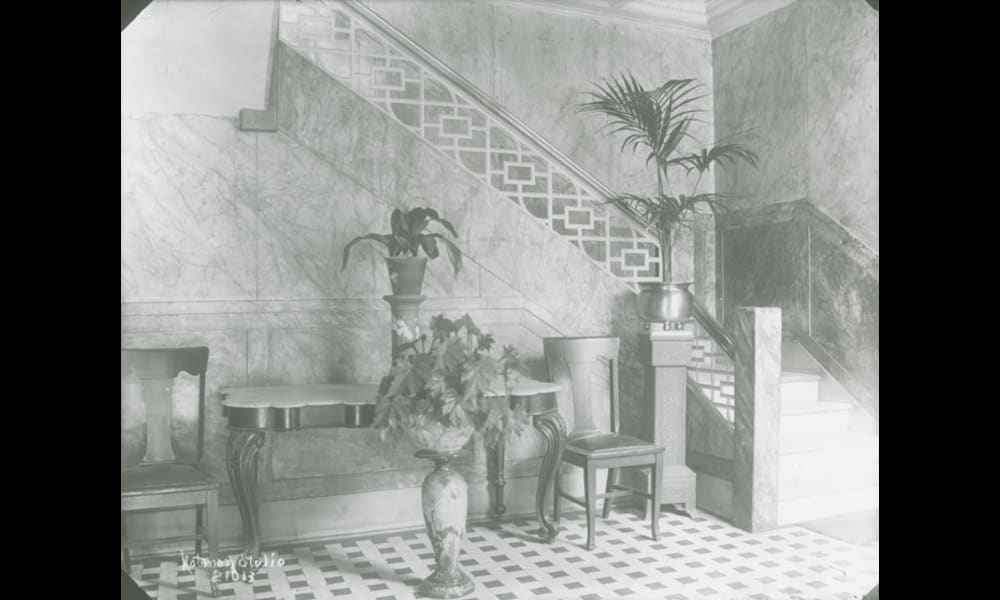|
1939 The Queen Hotel Fire
On the morning of March 2nd, 1939, the night clerk employed by the Queen Hotel discovered dense smoke rising up the stairwell from the hallway under the dining room floor. The first call to the Halifax Fire Department, according to records, was received at 6:27am. By this point the fire had reached the elevator shaft and, because of the highly flammable nature of the wooden interior which was layered in many years of paint and varnish, spread rapidly throughout the building reaching every floor due partially to the lack of any form of fire resisting walls lining the central shaft. By the time the Fire Department arrived at the five story structure the fire had grown to the point where most occupants had no chance of escape. A lack of fire alarms or any sort of early warning device coupled with burglar bars on many of the windows and wooden fire escapes that had already become engulfed in flames meant that even if they woke in time, many were doomed to perish. In all, some twenty eight of the seventy six occupants lost their lives that morning, many never to be recovered. Excerpt from The Register, March 8th, 1939: `` Screaming men, women and children rushed to windows, pleaded to be saved. Some jumped to the sidewalk and to the yard at the rear of the structure. Others plunged into fire nets and still others were carried down ladders by firemen as the flames licked greedily towards them. A number of people managed to get to a lower roof of the hotel only to be plunged to death as the roof collapsed beneath them.``[1] The fire proved to be an incredibly difficult challenge for the Halifax Fire Department in that not only was the sheer size of the fire taxing but firefighters were forced to deal with over twenty hours of work fighting this fire due in part to the following: ·Too few firefighters were available to respond and thereby perform efficient rescues. ·The Department owned only five ladders capable of reaching over forty five feet. ·The only available aerial ladder was twenty years old and firefighters choosing to use this aerial were warned by the Chief that they were doing so ``at their own risk``. ·Live overhead wires impeded rescues from the street level and the Department had no way of cutting or removing these high voltage lines. It is known that the on duty night fireman had shown up for work drunk the night before and had been fired. Due to his level of inebriation he was allowed to ``sleep it off`` downstairs over night. It was never proven but it is believed that he may have lit an earlier fire in a sink closet which was presumed to have been completely extinguished. There`s a strong belief that this was the cause of the later fire.[2] |
|||||||


Visit Halifax Fire Historical Society Veteran's Group
